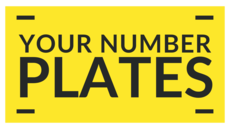Personalised number plates are a distinctive way to add individuality to a vehicle. Whether it’s a name, initials, or a clever wordplay, custom plates offer drivers the chance to make a statement. However, while personalisation is encouraged, strict regulations govern the design and display of number plates in the UK. The Driver and Vehicle Licensing Agency (DVLA) enforces these rules to maintain road safety and ensure plates remain readable by law enforcement and automated systems. Failing to comply with these guidelines can result in fines, MOT failures, and even the revocation of the plate itself.
Legal Requirements for Personalised Number Plates
Custom number plates must adhere to DVLA regulations to remain legally valid. These rules dictate:
- The permitted font style, character size, and spacing.
- The reflective properties of the plate for visibility.
- Prohibited decorative elements or custom symbols.
Ignoring these regulations can result in severe penalties, making it crucial for vehicle owners to verify compliance before purchasing a personalised plate.
Understanding the DVLA’s Number Plate Format
UK number plates follow a structured format to ensure clarity and standardisation. The three primary styles include:
- Current Format (2001-present): Two letters (regional identifier), followed by two numbers (vehicle registration year), and three random letters.
- Prefix Format (1983-2001): A single letter indicating the year, followed by numbers and three letters.
- Suffix Format (1963-1983): Three letters, followed by numbers, and a year-identifying suffix letter.
Each format serves a purpose, with newer plates designed to streamline vehicle registration and identification.
Font, Spacing, and Character Regulations
Personalised number plates must use the standard Charles Wright font, ensuring uniformity across all registered vehicles. Other essential regulations include:
- Character height: 79mm
- Character width: 50mm
- Character stroke thickness: 14mm
- Spacing between characters: 11mm
- Spacing between groups (letters and numbers): 33mm
Alterations to these specifications, such as custom fonts or rearranging characters to spell words improperly, are illegal and subject to fines.
Number Plate Materials and Colors: What’s Allowed?
UK law mandates that number plates adhere to the following material and color requirements:
- Front plate: White reflective background with black characters.
- Rear plate: Yellow reflective background with black characters.
- Prohibited colors: Red, blue, green, or any non-standard backgrounds.
- Legal additions: A legal national flag (Union Jack, Welsh Dragon, Scottish Saltire, or St George’s Cross).
Reflectivity standards are also strictly enforced to ensure visibility under different lighting conditions.
Illegal Modifications and Their Consequences
Modifying number plates in any of the following ways is unlawful:
- Using altered spacing to create misleading words.
- Displaying non-standard fonts or italicized characters.
- Incorporating unauthorized symbols, logos, or emblems.
- Applying tinted covers that obscure plate visibility.
Violating these laws can lead to:
- A £1,000 fine.
- Automatic MOT failure.
- The revocation of the number plate by the DVLA.
Private Number Plate Transfers and Retention
The process of transferring or retaining a private plate is straightforward but must follow legal protocols:
- Plates must be assigned to a taxed and MOT-compliant vehicle.
- Owners can apply for a V778 Retention Document to keep the plate for future use.
- Transfers between vehicles must be processed via the DVLA’s online or postal service.
Legal Display Requirements for Number Plates
Number plates must be clearly visible and correctly positioned. Legal requirements dictate:
- The front plate must be fixed to the bumper or grille.
- The rear plate must be centrally positioned on the boot or bumper.
- Motorcycles must display one plate at the rear only.
- Imported vehicles may require alternative sizing for compliance.
Incorrect placement or improper fixing can result in penalties.
Show Plates vs. Road-Legal Plates
Many drivers purchase show plates for aesthetic purposes, but these are not road-legal. Differences include:
- Show plates may use custom fonts and decorative elements.
- They are not required to follow DVLA spacing rules.
- Intended for indoor or off-road use only.
Driving with a show plate on public roads is a legal offense and should be avoided.
How to Ensure Your Personalised Number Plate is Legal
To avoid issues, vehicle owners should take the following steps:
- Purchase plates from DVLA-approved suppliers.
- Double-check spacing, font, and material compliance before installation.
- Regularly inspect plates for damage or fading to ensure continued legality.
A simple verification process can prevent costly fines and legal headaches.
Conclusion
Personalized number plates add a touch of individuality, but they come with strict legal obligations. Understanding and adhering to DVLA regulations ensures a trouble-free experience while maintaining the integrity of UK roads. By following the correct procedures and purchasing from licensed providers, drivers can enjoy their custom plates without risking fines or penalties.

